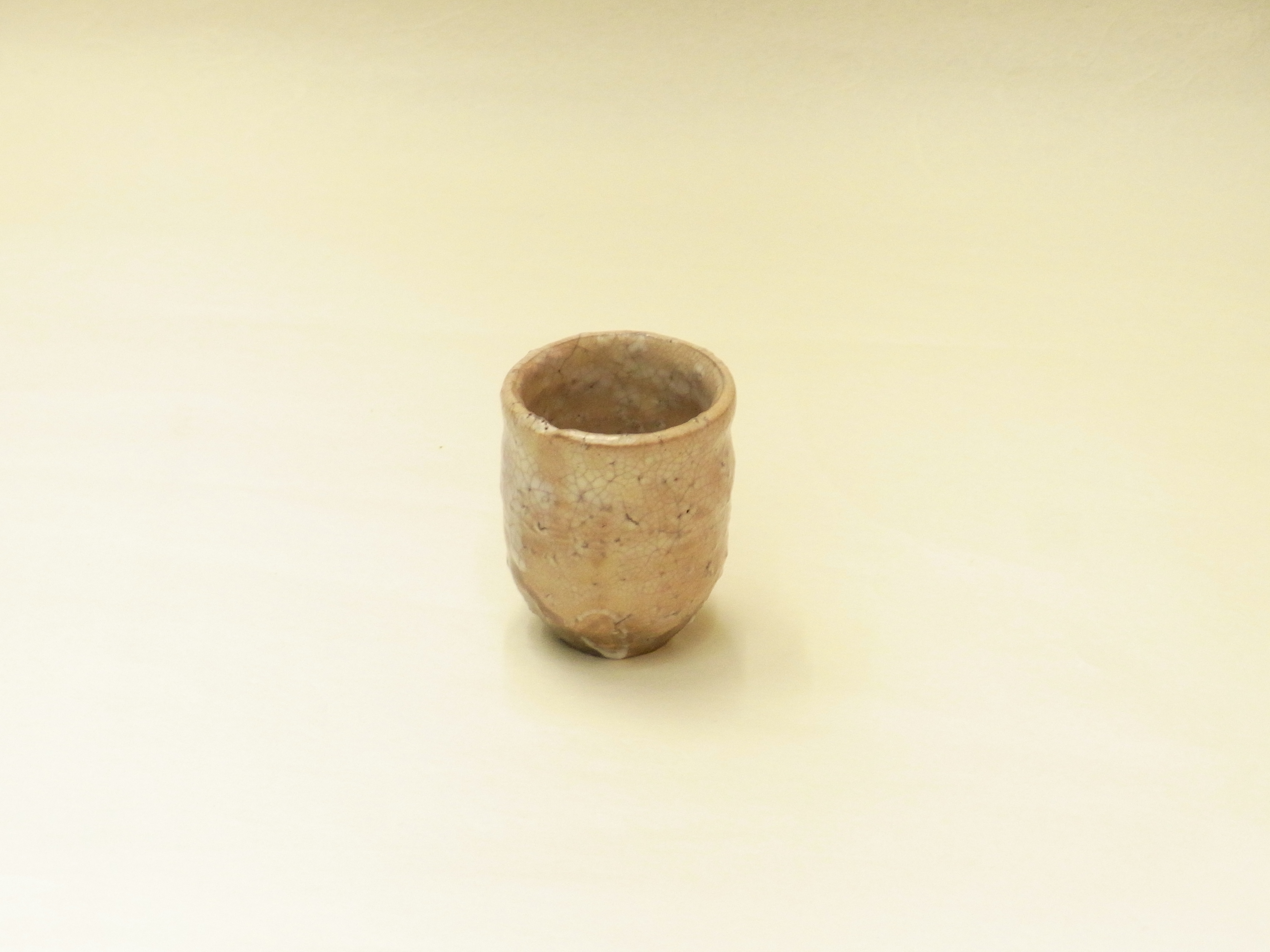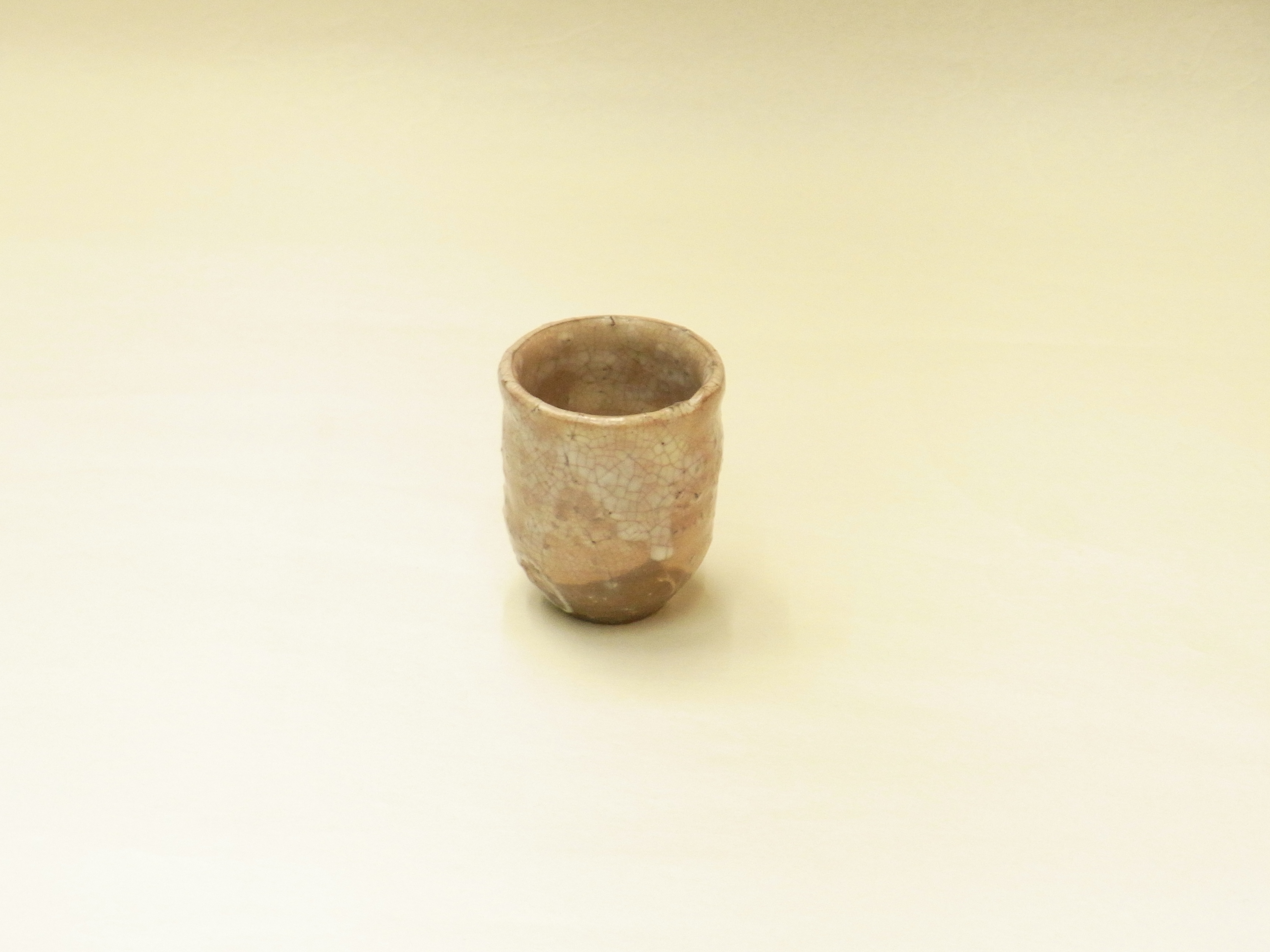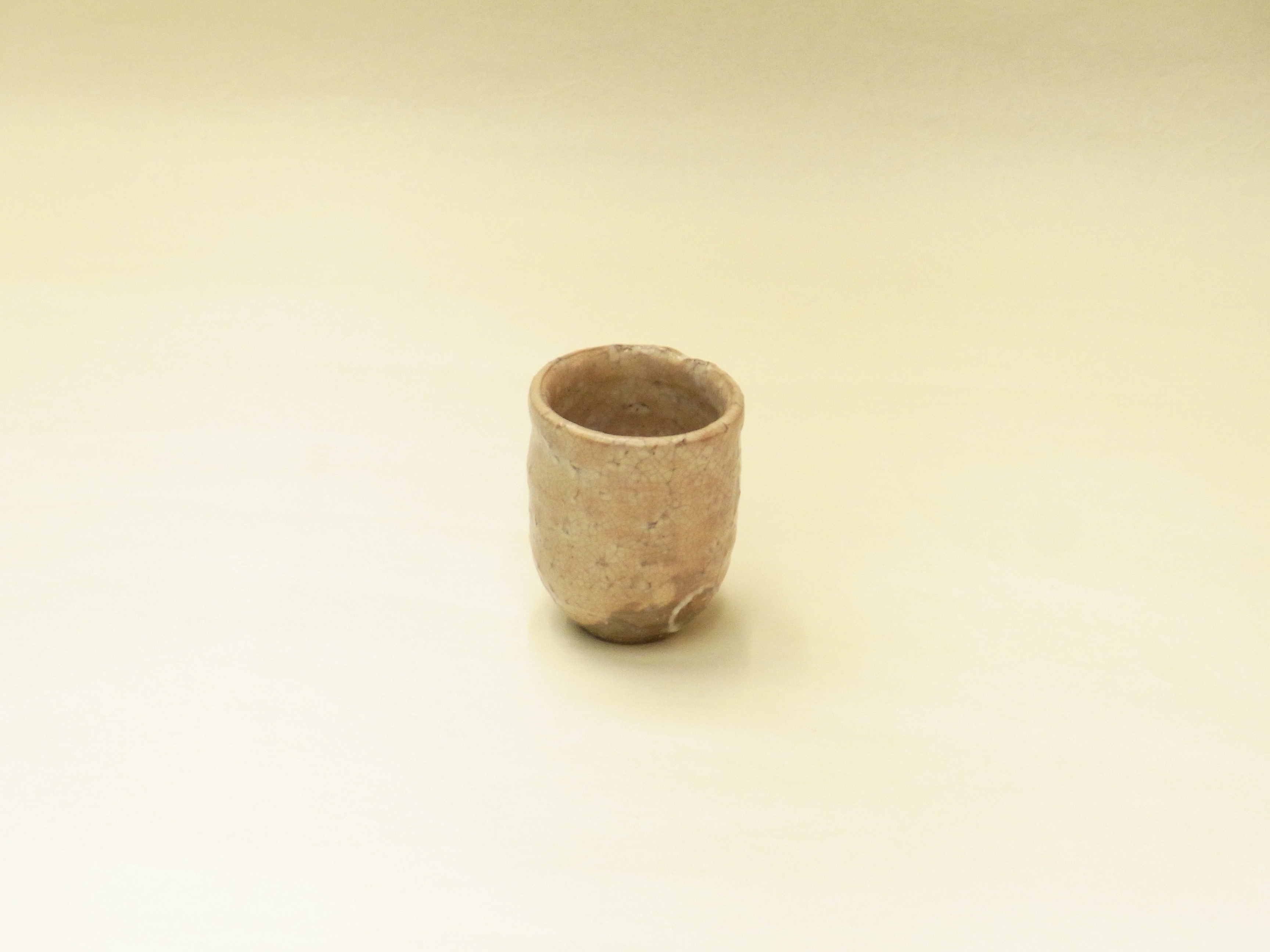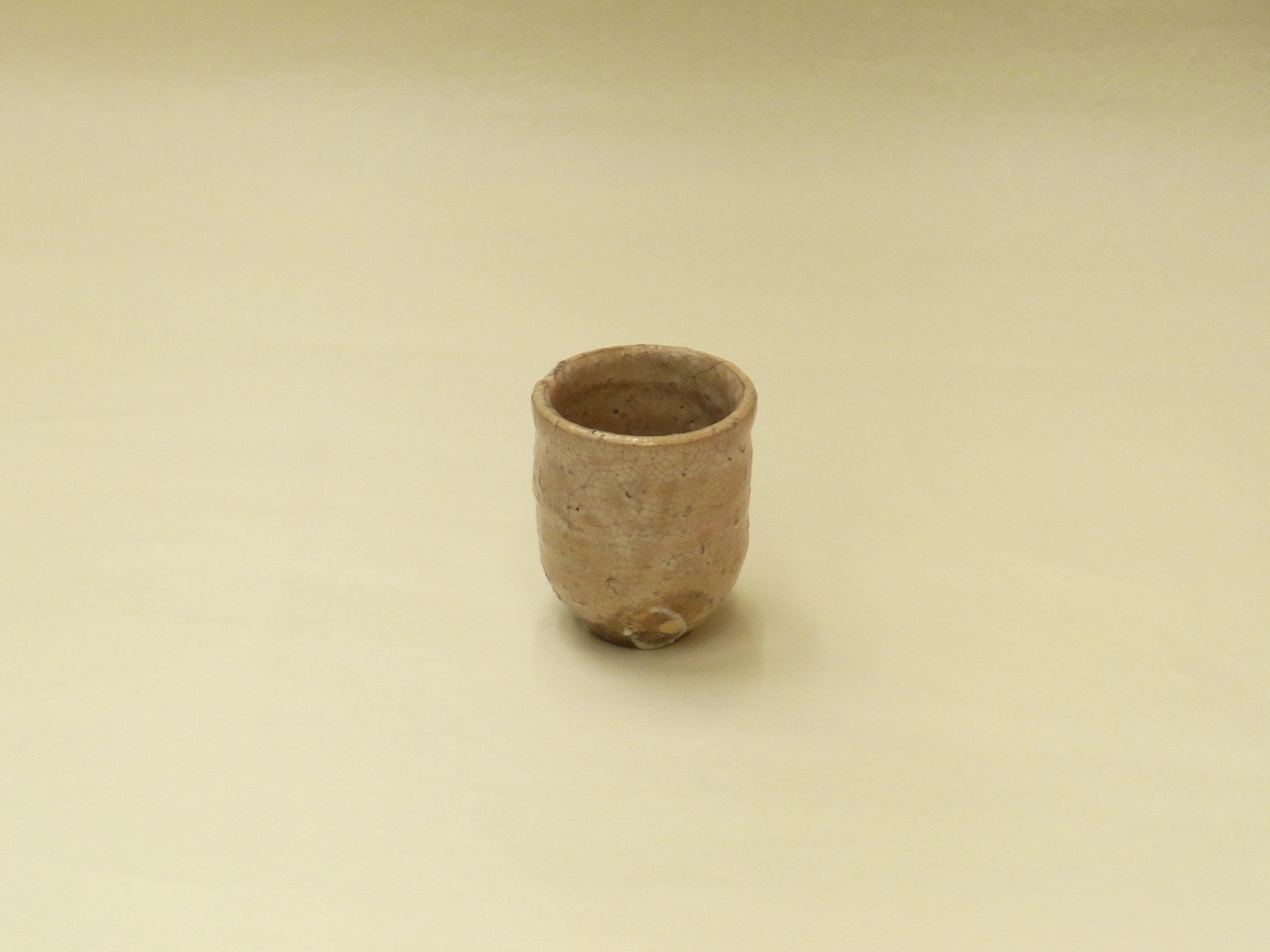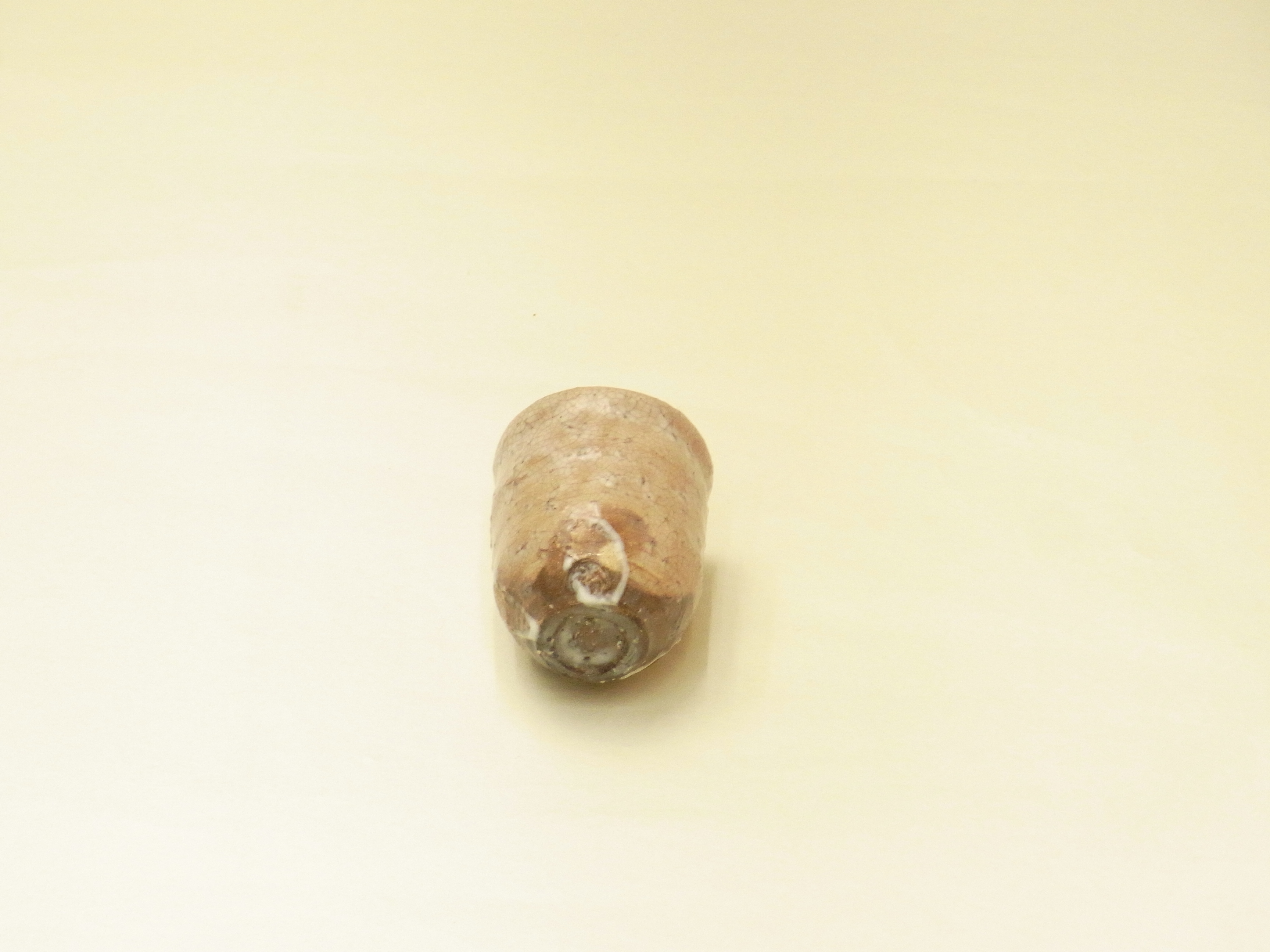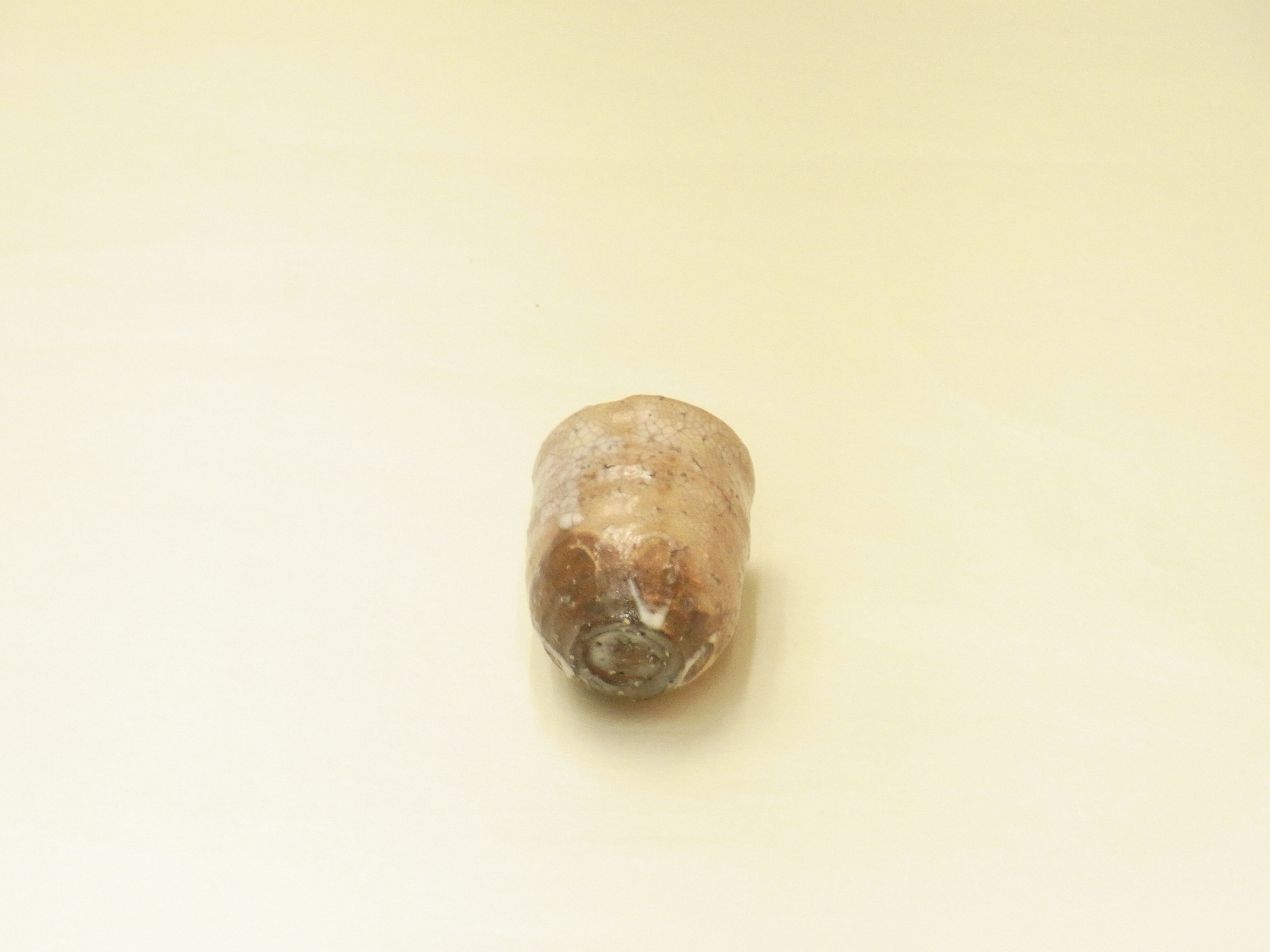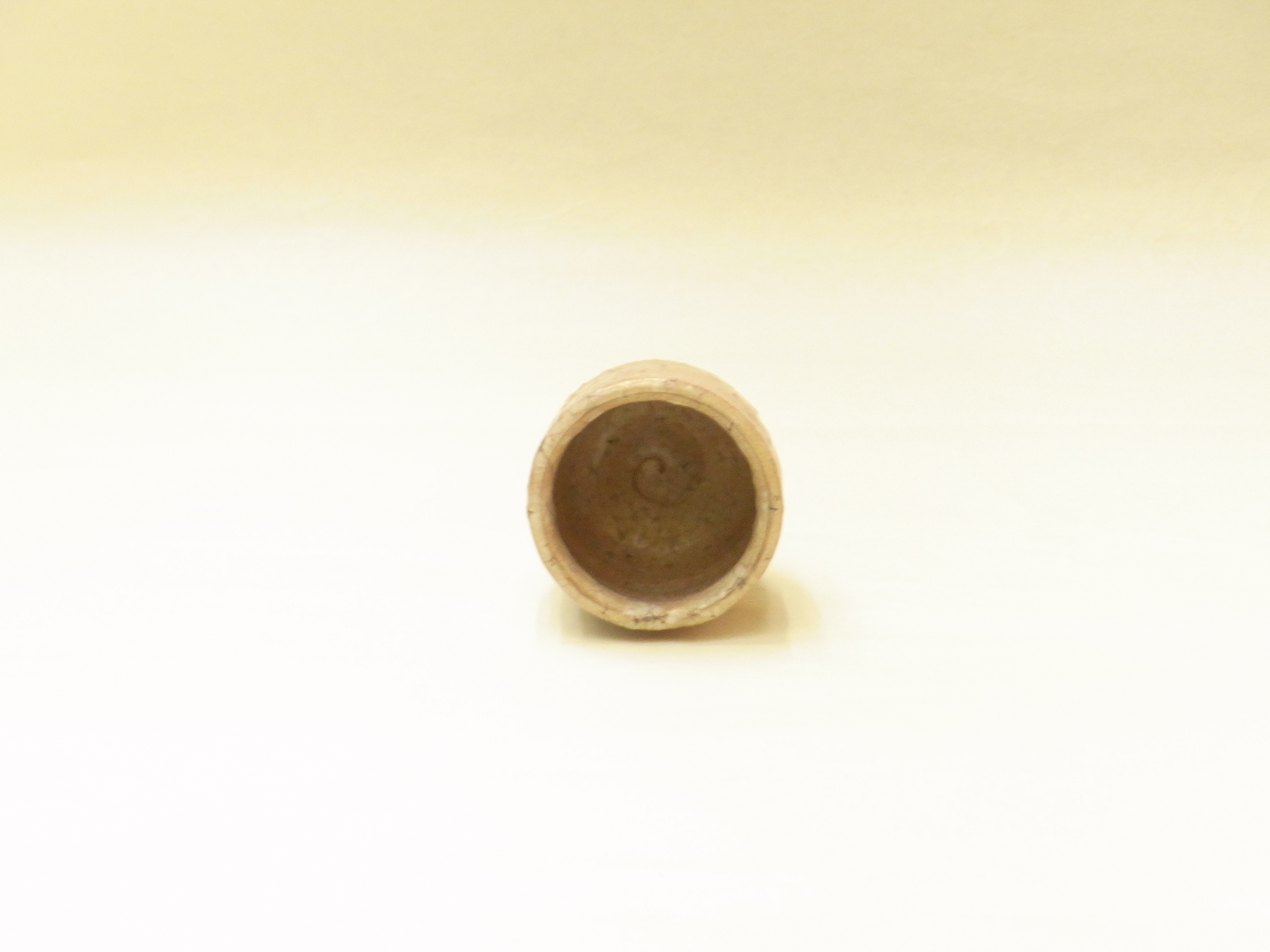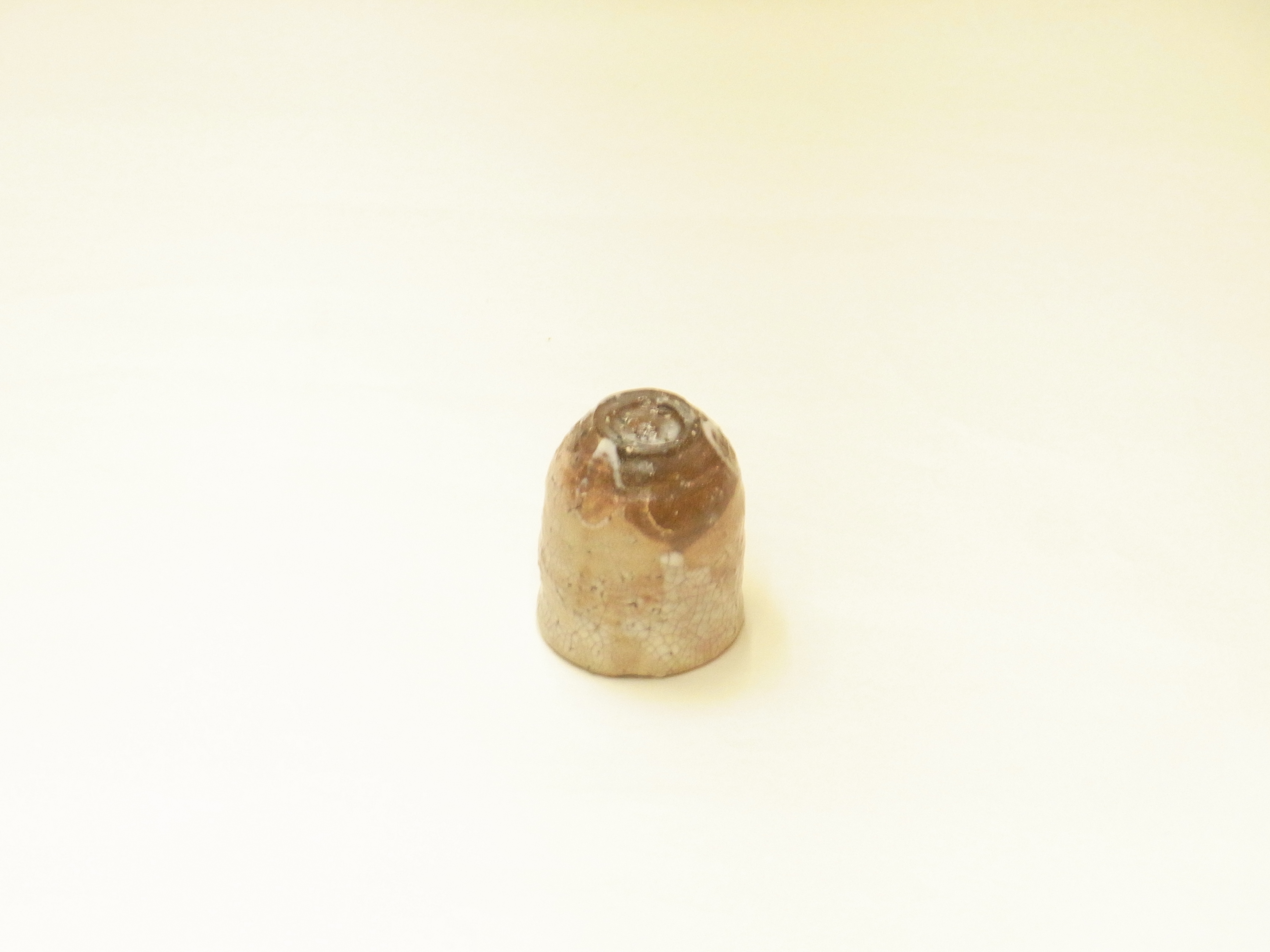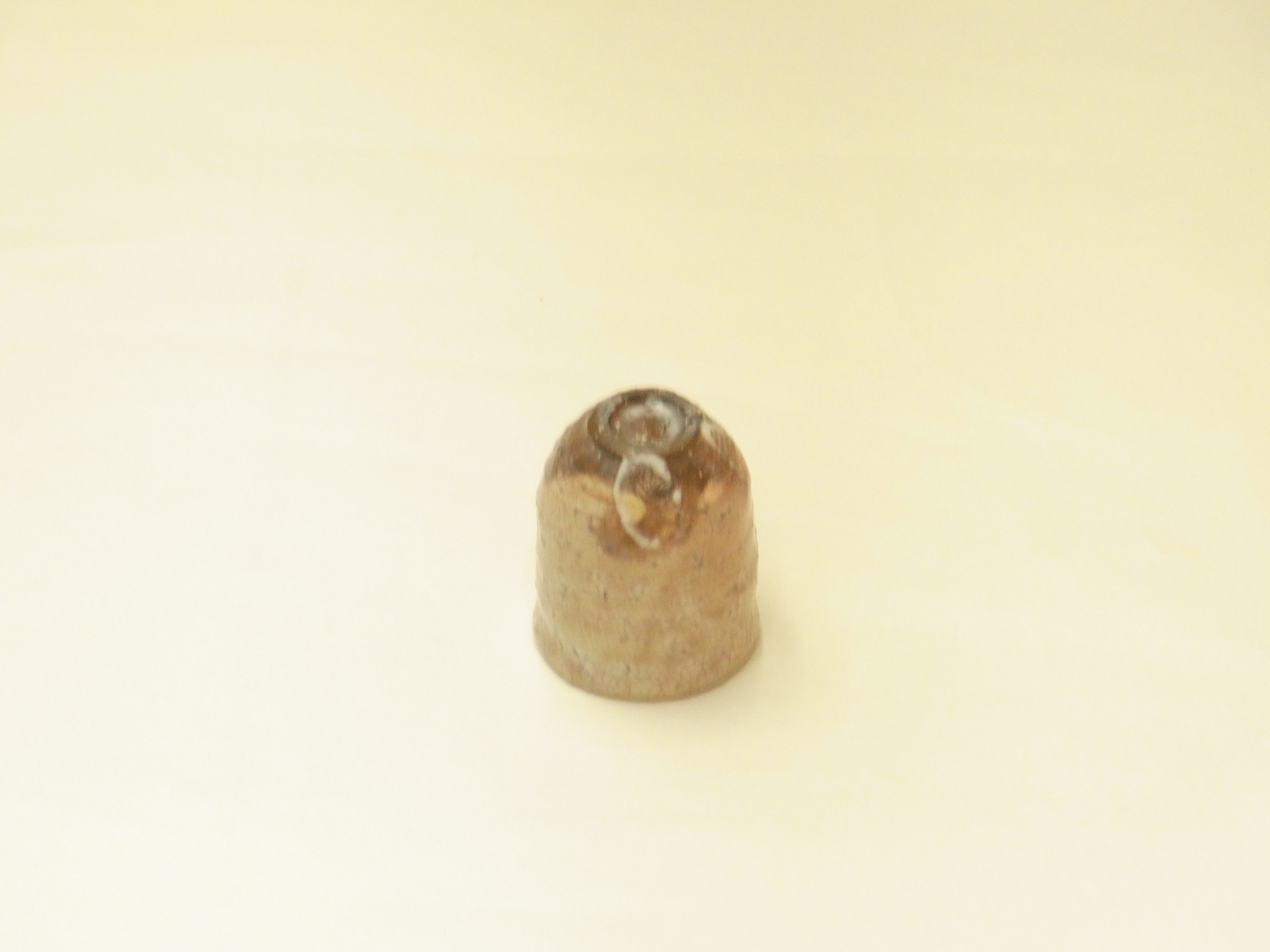口径 5㎝ 高さ 6㎝
It is an introduction of the gui-sumi of Yutaka Okada’s work.
Usually, when I say gui-sumi, I imagine a solid shape
This gui-don is slim and reminiscent of a hot water bowl.
It has become a rare little unusual guise.
Although it is a small vessel, there is a fine penetration in it.
There are a lot of them, and there are “stone zes” and various changes can be seen.
Penetration is a fine crack that can be made on the surface of the glaze, and the pottery is taken out of the kiln.
By rapidly cooling, the difference in shrinkage rate between the glaze and the fabric,
Cracks often occur.
It is often caught as a scene of the vessel the penetration which can be done naturally.
“Stone is a ze” is a sandstone in the base, baked in a kiln, and inside
cracks on the surface, and the sandstones in the
The change that the grain of sand was able to grow out by chance was prized especially in the tea person.
There is the one near this, and there is a taste in this guise, too.
In addition, when the writer put the fabric on the glaze, there are traces of the finger.
This also has a sense of handmade by the artist, which increases its value.
Indescribable, gentle deep color unique to the rose
the value of the vessel.
這是岡田弘的介紹。
通常,我想像一個整潔的形狀,當我說”古米”。
這個地方的古米是苗條的,讓人想起一個熱水浴,
它已成為一個不尋常的小變化。
這是一個小容器,但裡面有細小的穿透。
它進入了很多,有”石頭”和變化。
滲透是一個細裂縫,可以在釉面上,把陶器從窯裡拿出來。
通過迅速冷卻,從釉料和織物之間的收縮率的差異,
通常會發生裂縫。
它經常捕捉自然的滲透作為容器的景觀。
“石頭”是指在地下的砂石,在窯中烘烤,在裡面。
成為風景,表面有裂縫,或沙石暴露
沙粒膨脹和偶然的變化,特別是在茶人中是珍貴的。
有一個接近這一點,有一個味道,甚至這個古米。
此外,當作家把麵團放在釉料上時,有手指的痕跡。
這再次使作家的手工製作感增加,並提高了價值。
很難說,只有溫柔和深沉的色調
提高儀器的價值。
这是冈田弘的介绍。
通常,我想象一个整洁的形状,当我说”古米”。
这个地方的古米是苗条的,让人想起一个热水浴,
它已成为一个不寻常的小变化。
这是一个小容器,但里面有细小的穿透。
它进入了很多,有”石头”和变化。
渗透是一个细裂缝,可以在釉面上,把陶器从窑里拿出来。
通过迅速冷却,从釉料和织物之间的收缩率的差异,
通常会发生裂缝。
它经常捕捉自然的渗透作为容器的景观。
“石头”是指在地下的砂石,在窑中烘烤,在里面。
成为风景,表面有裂缝,或沙石暴露
沙粒膨胀和偶然的变化,特别是在茶人中是珍贵的。
有一个接近这一点,有一个味道,甚至这个古米。
此外,当作家把面团放在釉料上时,有手指的痕迹。
这再次使作家的手工制作感增加,并提高了价值。
很难说,只有温柔和深沉的色调
提高仪器的价值。
